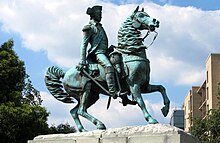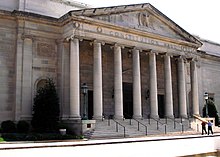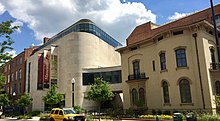Foggy Bottom
[1] The Foggy Bottom area was the site of one of the earliest European settlements in what is now Washington, D.C., when German settler Jacob Funk (or Funck) subdivided 130 acres (0.53 km2) near the meeting place of the Potomac River and Rock Creek in 1763.By the 19th century, Foggy Bottom became a community of laborers employed at the nearby breweries, glass plants, and city gas works.He tried to revive the tradition of his family's Christian Heurich Brewing Company, which had ceased production in Foggy Bottom.Christian Heurich Brewing Company's most successful products bore such local names as Senate and Old Georgetown.George Washington University has grown significantly over the past decades and now covers much of the neighborhood, which has many historic old homes and numerous mid-rise apartment buildings.Just south of the Watergate complex, on the Potomac River, lies the John F. Kennedy Center for the Performing Arts, home of the National Symphony Orchestra and numerous other theatrical and musical exhibitions.George Washington University's Lisner Auditorium and Smith Center are frequently home to major concerts, as is DAR Constitution Hall.Foggy Bottom, along with the rest of Washington D.C, was designed using the L'Enfant Plan, which created squares of housing with open space left in the middle.The situation became worse after the Civil War when a wave of newly freed Black Americans moved to Washington and began populating the alleys.The living conditions of the inhabitants were quite abysmal, with half of the population sharing or having no toilet facilities[9] Furthermore, crime was a major problem; a section of Foggy Bottom was nicknamed "Round Tops" because of a well-known gang that was active in the area.Because breweries were a major source of income for the inhabitants of Foggy Bottom, prohibition created a new wave of lower-class workers who flocked to the alleys to set up bootleg liquor stores.[10] In 1856, construction began on the West Station Works, a plant owned and operated by the Washington Gas Light corporation, at the intersections of 26th and G St.Foggy Bottom is thought to have received its name due to an atmospheric quirk of its low lying, marshy riverside location, which made it susceptible to concentrations of fog, and later, industrial smoke.Many different factors forced out the black population, including the Foggy Bottom Taxpayers Protective Association opposing federal intervention.The neighborhood is predominately white and has a large number of off-campus university student residents that affect demographics on income, age and race.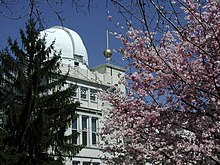

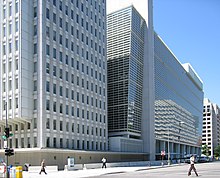

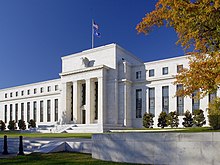
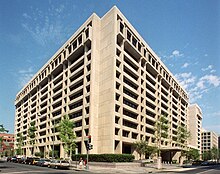


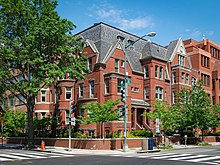
Foggy Bottom–GWU (WMATA station)Neighborhood of Washington, D.C.Corcoran School of ArtU.S. Department of InteriorMonroe-Adams HouseGeorge Washington UniversityThe Octagon HouseAmerican Red CrossFoggy Bottom–GWU stationUnited StatesWashington, D.C.QuadrantNorthwestneighborhoodWhite HousePotomac RiverNational MallGeorgetownWest EndDowntown D.CU.S. Department of Statemetonymfederal agenciesFederal ReserveWorld BankInternational Monetary FundEquestrian statue of George WashingtonWashington Circlemoons of MarsOld Naval ObservatoryGermanRock CreekLutheranPresbyterianConcordia German ChurchbreweriesNaval ObservatoryChristian HeurichWashington SenatorsJohn F. Kennedy Center for the Performing ArtsNew YorkU.S. National Register of Historic PlacesU.S. Historic districtWatergate ComplexKennedy Center for the Performing ArtsOdd FellowsWatergate scandalRichard NixonresignationNational Register of Historic PlacesNational Symphony OrchestraVirginia AvenueSimon BolivarLisner AuditoriumSmith CenterDAR Constitution Halloriginal locationUnited States Naval ObservatoryMain Interior BuildingDepartment of the InteriorBureau of Indian AffairsFederal Reserve BoardEisenhower Executive Office BuildingExecutive Office of the President of the United StatesOffice of the Vice President of the United StatesInternational Finance CorporationOffice of Personnel ManagementDaughters of the American RevolutionAmerican Pharmacists AssociationAmerican Red Cross National HeadquartersPan American Health OrganizationOrganization of American Statesthe MexicanSpanish embassiesPennsylvania AvenueSnows CourtEccles BuildingL'Enfant PlanAlley Dwelling AuthorityEleanor RooseveltHarry S. Truman BuildingThe Textile MuseumRock Creek ParkwayConstitution AvenueUnited States Department of StateHarry S Truman BuildingTheodore G. Bilbo2010 United States CensusFoggy Bottom – GWUWashington MetroOrangeSilver LinesMetrobus32, 36electric scootersThe President's OfficeDistrict of Columbia Public SchoolsCardozo Education CampusSchool Without WallsQuai d'OrsayDowntownLincoln MemorialConstitution GardensNeighborhoodsAdams MorganColumbia HeightsKalorama TriangleLanier HeightsLeDroit ParkMeridian HillMount PleasantPark ViewPleasant PlainsU Street Corridor (Cardozo/Shaw)Woodley ParkBurleithChinatownDupont CircleSheridan-KaloramaLogan CircleMount Vernon SquarePenn QuarterSouthwest Federal CenterAmerican University ParkBerkleyCathedral Heights
